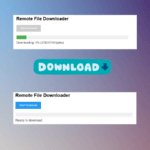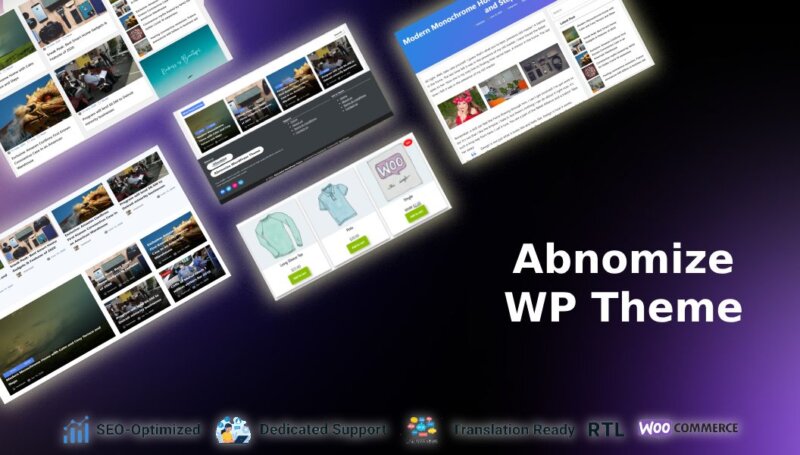Your cart is currently empty!
Downloading files from a remote server is a common feature for many websites, but adding a live progress bar can take the user experience to the next level. In this tutorial, I’ll guide you through building a PHP remote file downloader with a real-time progress bar using PHP, AJAX, and JavaScript. Whether you’re a beginner or a seasoned developer, this step-by-step guide will help you create a user-friendly file download system for your WordPress site or any web project.
This tutorial is designed to be practical, with a complete code example hosted on GitHub. By the end, you’ll have a working script that’s perfect for downloading large files like backups, media, or archives, complete with a sleek progress bar and error handling.
Why Build a PHP File Downloader with a Progress Bar?
Adding a progress bar to your file download system isn’t just about aesthetics—it’s about improving usability and engagement. Here’s why this project is worth your time:
- Real-time Feedback: Users see the download progress as it happens, making the process feel transparent and reliable.
- Error Handling: The script gracefully manages issues like failed connections or permission errors, ensuring a smooth experience.
- SEO Benefits: User-friendly features like this can boost engagement, reduce bounce rates, and improve your site’s ranking.
- Versatility: This script works for various file types and sizes, from small PDFs to large .tar.gz archives.
Prerequisites
Before we dive into the code, make sure you have the following:
- A web server with PHP 7.4 or higher installed (most WordPress hosting providers support this).
- Write permissions in the directory where the downloaded files will be saved.
- Basic knowledge of PHP, HTML, CSS, and JavaScript.
- A publicly accessible remote file URL for testing (e.g., a .zip, .tar.gz, or media file).
- A GitHub account to access the code (or you can copy it from the repository linked below).
- Ensure your server has adequate disk space and PHP is configured with appropriate memory_limit and max_execution_time for large files. The progress bar accuracy depends on the remote server providing Content-Length headers.
Pro Tip: Start with a small test file to verify the script works before tackling large downloads.
The PHP Remote File Downloader Script
The complete code for this project is available on GitHub: PHP Remote File Downloader Repository. This is a single-file solution that combines the frontend (HTML, CSS, JavaScript) and backend (PHP) logic for simplicity. You can download the script, customize it, and integrate it into your WordPress site.

Here’s a high-level overview of what the script does:
- Downloads a remote file to your server while streaming it to the client.
- Displays a live progress bar that updates in real-time using AJAX and the Fetch API.
- Provides status messages to confirm success or report errors.
- Handles large files efficiently with a 4KB buffer and proper memory management.
To use the script, save it as downloader.php in your WordPress theme or plugin directory, ensure your server has write permissions, and access it via a browser. The GitHub repository includes detailed setup instructions.

How the Script Works
Let’s break down the key components of this PHP file download script:
- PHP Backend: The server-side logic uses PHP’s
fopenandfreadto stream the remote file in 4KB chunks. It saves the file locally and sends the data to the client for progress tracking. The script also extracts the remote file’s size (via Content-Length headers) to calculate the progress percentage. - AJAX with Fetch API: The JavaScript frontend uses the Fetch API to monitor the download stream. It reads the incoming data chunks, calculates the progress, and updates the progress bar and status messages in real-time.
- Responsive UI: The HTML and CSS create a clean, mobile-friendly interface with a green progress bar, a “Start Download” button, and a status display. The design is lightweight and fits seamlessly into any WordPress theme.
- Error Handling: The script checks for issues like failed connections or missing permissions, displaying user-friendly error messages if something goes wrong.
Note: The progress bar’s accuracy depends on the remote server providing Content-Length headers. If these aren’t available, the script will still work, but the percentage won’t be precise.
Copy below code and paste in PHP file and open PHP file URL
<?php
define('BUFSIZ', 4096);
set_time_limit(0);
if ($_SERVER['REQUEST_METHOD'] === 'POST') {
$url = 'https://example.com/myfile.zip';
$output_file = basename($url);
header('Content-Type: application/octet-stream');
header('Content-Disposition: attachment; filename="' . $output_file . '"');
try {
$remote_file = fopen($url, 'rb');
if ($remote_file === false) {
throw new Exception('Failed to open remote file');
}
$local_file = fopen($output_file, 'wb');
if ($local_file === false) {
fclose($remote_file);
throw new Exception('Failed to create local file');
}
$file_size = 0;
$remote_headers = stream_get_meta_data($remote_file);
foreach ($remote_headers['wrapper_data'] as $header) {
if (stripos($header, 'Content-Length:') === 0) {
$file_size = (int)trim(substr($header, 15));
break;
}
}
header('Content-Length: ' . $file_size);
while (!feof($remote_file)) {
$buffer = fread($remote_file, BUFSIZ);
fwrite($local_file, $buffer);
echo $buffer;
flush();
}
fclose($remote_file);
fclose($local_file);
} catch (Exception $e) {
http_response_code(500);
echo json_encode(['error' => $e->getMessage()]);
}
exit;
}
?>
<!DOCTYPE html>
<html lang="en">
<head>
<meta charset="UTF-8">
<meta name="viewport" content="width=device-width, initial-scale=1.0">
<title>File Downloader with Progress</title>
<style>
body { font-family: Arial, sans-serif; margin: 20px; }
.progress-container { width: 100%; max-width: 600px; margin: 20px 0; }
.progress-bar { width: 0%; height: 20px; background: #4CAF50; transition: width 0.3s; }
.progress-wrapper { background: #f0f0f0; border-radius: 5px; overflow: hidden; }
#status { margin-top: 10px; color: #333; }
#downloadBtn { padding: 10px 20px; background: #2196F3; color: white; border: none; cursor: pointer; }
#downloadBtn:disabled { background: #cccccc; cursor: not-allowed; }
</style>
</head>
<body>
<h2>Remote File Downloader</h2>
<button id="downloadBtn" onclick="startDownload()">Start Download</button>
<div class="progress-container">
<div class="progress-wrapper">
<div class="progress-bar" id="progressBar"></div>
</div>
<div id="status">Ready to download</div>
</div>
<script>
async function startDownload() {
const button = document.getElementById('downloadBtn');
const status = document.getElementById('status');
const progressBar = document.getElementById('progressBar');
button.disabled = true;
status.textContent = 'Starting download...';
try {
const response = await fetch('<?php echo $_SERVER['PHP_SELF']; ?>', {
method: 'POST',
headers: { 'Content-Type': 'application/json' }
});
const reader = response.body.getReader();
const contentLength = +response.headers.get('Content-Length') || 0;
let receivedLength = 0;
while (true) {
const { done, value } = await reader.read();
if (done) break;
receivedLength += value.length;
const percentage = contentLength ?
Math.round((receivedLength / contentLength) * 100) : 0;
progressBar.style.width = percentage + '%';
status.textContent = `Downloading: ${percentage}% (${receivedLength} bytes)`;
}
status.textContent = 'Download completed successfully!';
progressBar.style.width = '100%';
} catch (error) {
status.textContent = 'Error: ' + error.message;
} finally {
button.disabled = false;
}
}
</script>
</body>
</html>Step-by-Step Setup Guide
Follow these steps to implement the PHP remote file downloader on your WordPress site:
- Download the Code: Clone or download the script from the GitHub repository.
- Customize the URL: In the PHP code, update the
$urlvariable to point to your desired remote file (e.g.,https://example.com/myfile.zip). - Upload to WordPress: Place the `down
Comments
Grabber Pro
Original price was: $59.$39Current price is: $39.Custom WooCommerce Checkbox Ultimate
Original price was: $39.$19Current price is: $19.Android App for Your Website
Original price was: $49.$35Current price is: $35.Abnomize Pro
Original price was: $30.$24Current price is: $24.Medical Portfolio Pro
Original price was: $31.$24Current price is: $24.
Latest Posts
- How to Create a PHP Remote File Downloader with Live Progress Bar

- How to Connect AWS CloudFront URL with a Cloudflare Subdomain

- Android Developer Interview Questions Categorized by Topic

- When Data Must be Sanitized, Escaped, and Validated in WordPress

- Alternative to WordPress for High Traffic News Websites: Node.js & Other Scalable Solutions








Leave a Reply